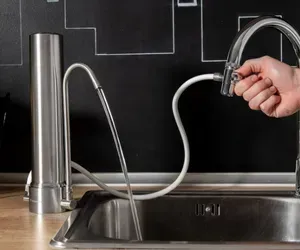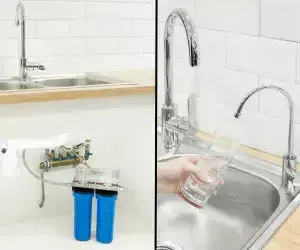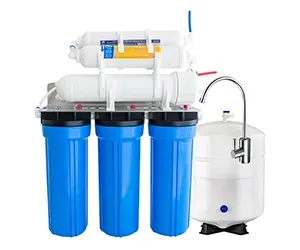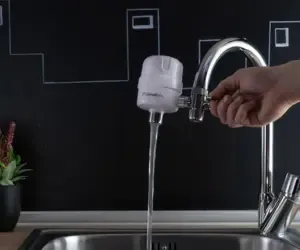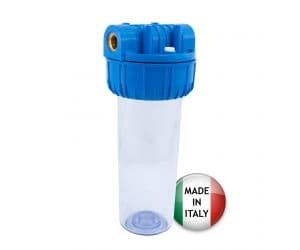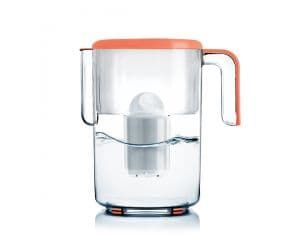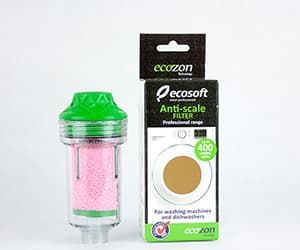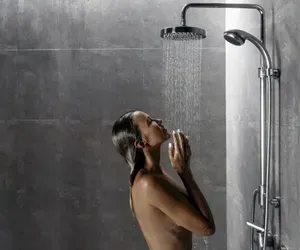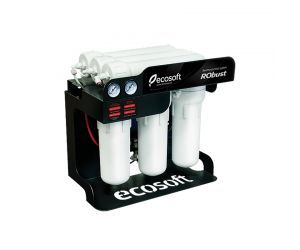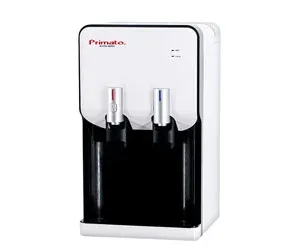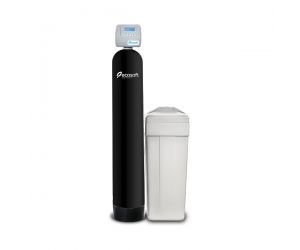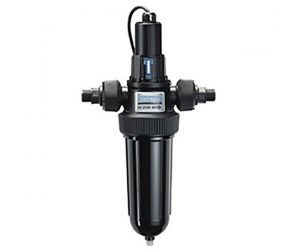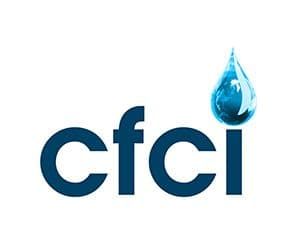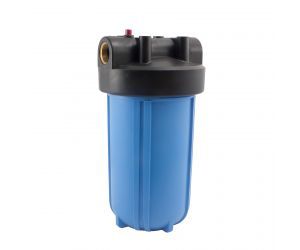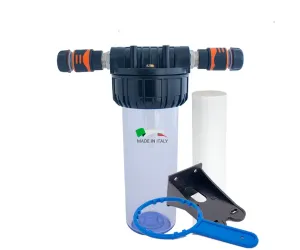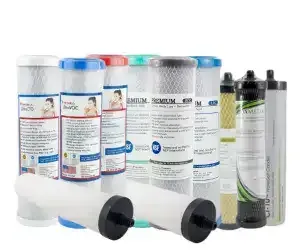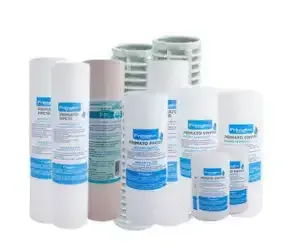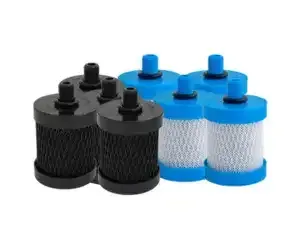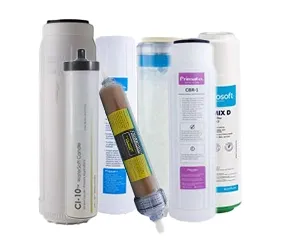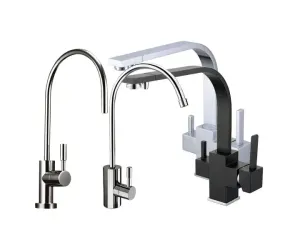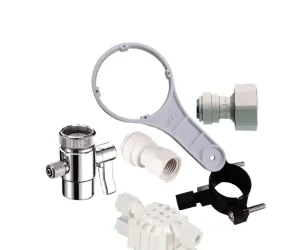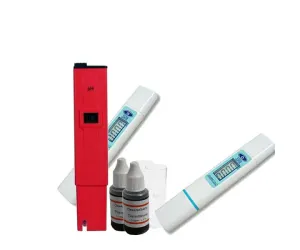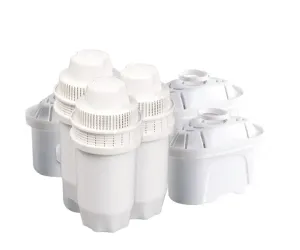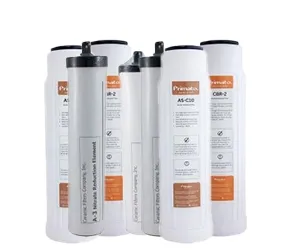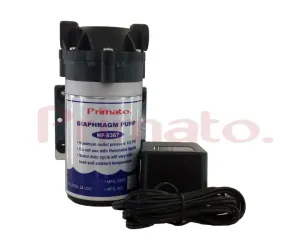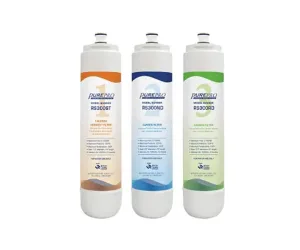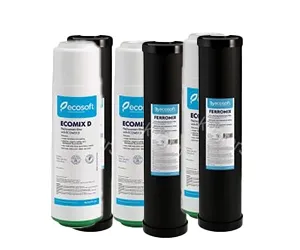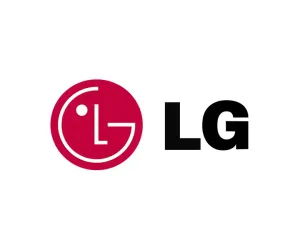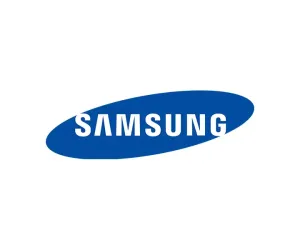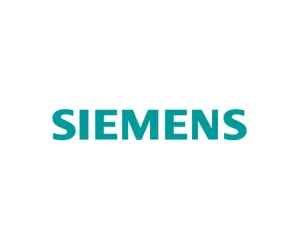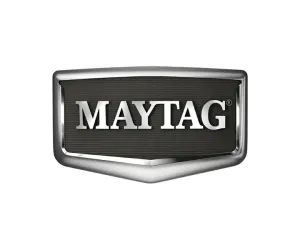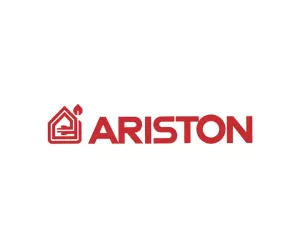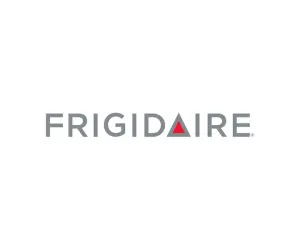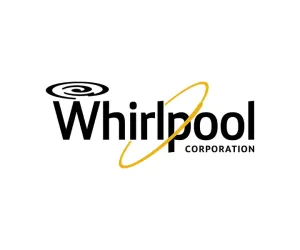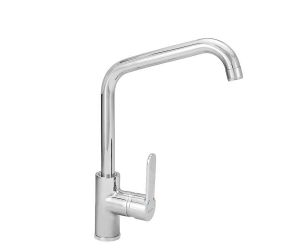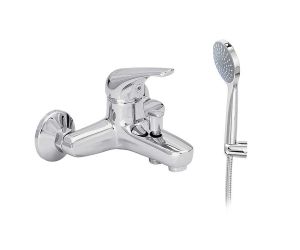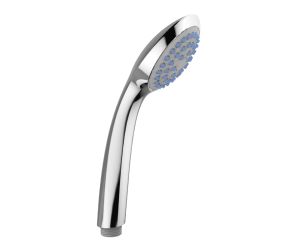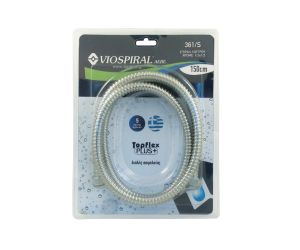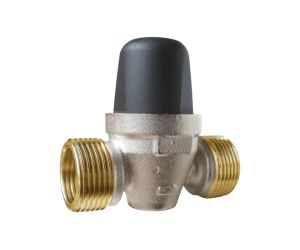Our Blog
Water filters clean harmful substances from water. But which is the best filter for you? On our blog you will find many interesting articles about water and tap water filters, above and below the counter, etc., to be properly informed before buying a filter that may not be suitable for you. If you need more information and information then just call us at +30 2310 383 588. We will be happy to serve you!
Well Water in Greece: What’s Really in It and How to Make It Safe
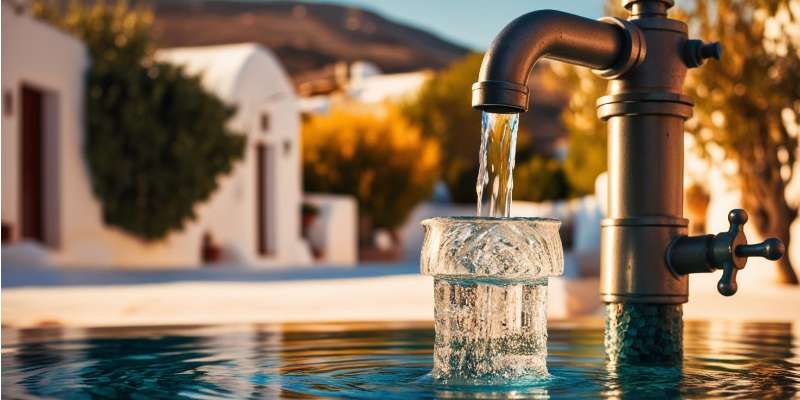
In many rural and coastal areas of Greece, households rely on private wells for their water supply. While this offers independence and cost savings, it also brings significant responsibility: ensuring the water is safe for consumption. Studies and regional data have revealed a variety of contaminants in Greek groundwater — some visible, many not. This article explores the risks and shows how advanced filtration, especially reverse osmosis systems from Primato, can offer a reliable solution.
NanoMetix 10" 0.01μm Water Filter | Advanced Nanofiltration Against PFAS & Microplastics
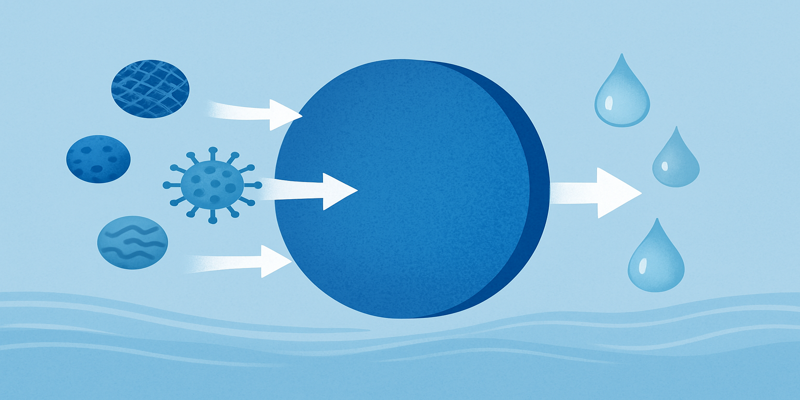
As concerns grow over water quality — from PFAS to microplastics and harmful pathogens — the need for filtration systems that offer comprehensive protection without compromising flow or taste has never been greater. One of the most advanced technologies available today is nanofiltration, and the NanoMetix 10" 0.01μm filter harnesses its full potential.
The Future of Water: How Primato Filters are Pioneering New Standards in Water Safety
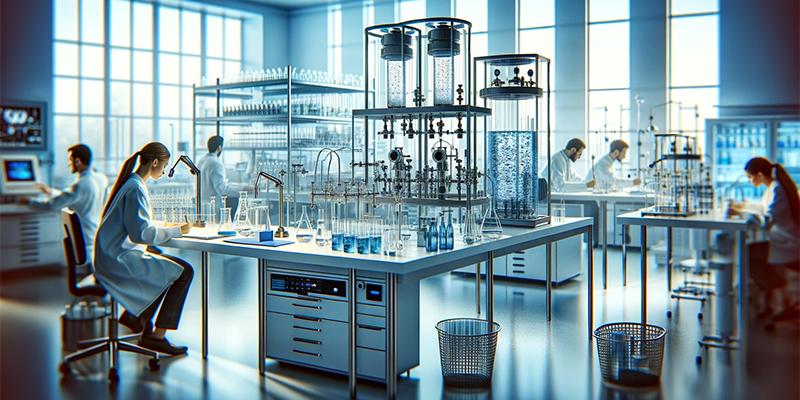
In an age where water safety is increasingly paramount, Primato Filters has emerged as a leader in pioneering new standards. With a focus on cutting-edge technology and certifications like NSF 42 and component certification, as well as the EN-ISO 14898 European certification, Primato is setting a benchmark for purity and safety in water consumption.
Primato's Journey at Aquatech Amsterdam: Building Bridges and Expanding Horizons

In the bustling city of Amsterdam, where innovation meets tradition, the Aquatech Trade Show stands as a beacon of progress in the world of water technology. For Primato, a dynamic company at the forefront of water treatment solutions in Greece, this event presented an unparalleled opportunity. Attending with a clear vision, Primato aimed not only to absorb the wealth of knowledge and innovation on display but also to forge new partnerships and strengthen existing ones, particularly with prominent American companies.
As the anticipation for the Aquatech Amsterdam event grew, the team at Primato engaged in thorough preparation. Understanding that the success of such a venture relies not just on participation but on strategic planning, our team meticulously outlined goals and strategies. We identified key players in the American market, set up meetings with potential partners, and prepared to showcase our innovative products and solutions. Our preparation was a blend of market research, understanding the latest trends, and aligning our offerings with the needs of a global audience. This preparatory phase was as much a journey of internal alignment as it was of external planning, ensuring that every member of our delegation was a bearer of Primato's vision and values.
The days at Aquatech Amsterdam were marked by a series of successful meetings and presentations. Our conversations with American companies were particularly fruitful, leading to the initiation of several promising partnerships. These new alliances were grounded in shared values of sustainability, innovation, and quality. We also took this opportunity to reinforce our existing relationships. Meeting with long-time partners in this international setting allowed us to share our progress, align future strategies, and discuss collaborative projects. These interactions were not just affirmations of existing bonds but also a step towards evolving these partnerships in line with the dynamic landscape of water technology.
In reflection, our participation in Aquatech Amsterdam was more than just an event attendance; it was a strategic move in Primato's journey towards becoming a global influencer in the water technology sector. The insights we gained, the relationships we nurtured, and the partnerships we formed are stepping stones towards a future where Primato is synonymous with innovation, quality, and sustainability in the international water technology arena.
One of the most significant achievements for Primato at Aquatech Amsterdam was the solidification of our partnership with Ceramic Filters Company, a renowned American enterprise specializing in advanced water filtration solutions. This collaboration marked a pivotal moment in our quest to integrate cutting-edge technologies and expand our product range to meet diverse market needs.
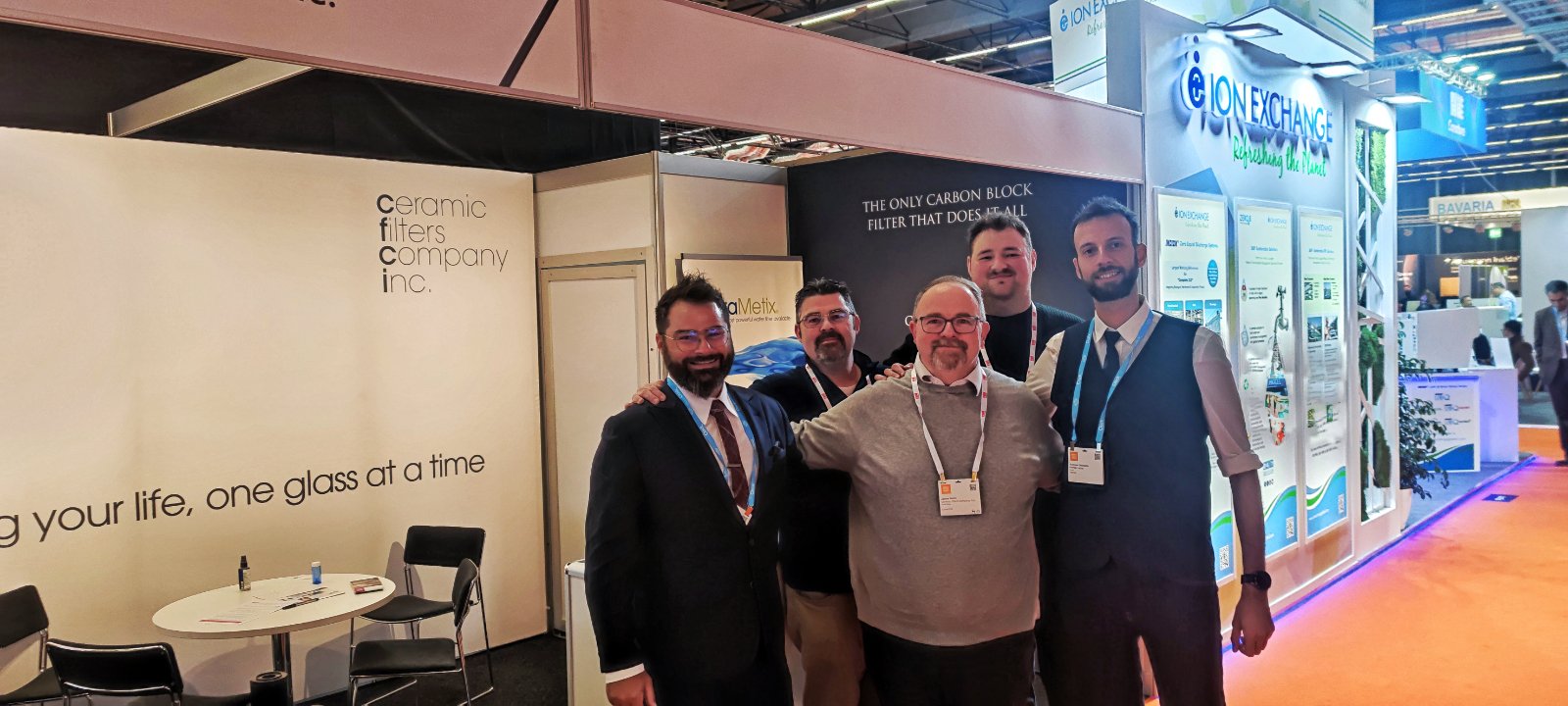
Our initial connection with Ceramic Filters Company had been established through a shared commitment to innovation and sustainability in water treatment. At Aquatech Amsterdam, this relationship took a substantial leap forward. Our teams engaged in in-depth discussions, exploring synergies between our respective technologies and market approaches. We recognized the complementarity of Ceramic Filters Company's advanced ceramic filtration technology with our own expertise in water purification. This synergy presented a unique opportunity to co-develop solutions that could set new standards in water quality and sustainability.
These discussions went beyond mere technical collaboration. They encompassed a shared vision for the future of water technology – one where innovative solutions could address the growing global challenges of water scarcity and pollution. Our strengthened partnership with Ceramic Filters Company was not just a business achievement; it was a step towards making a tangible impact in the field of environmental sustainability.
In conclusion, the solidification of our relationship with Ceramic Filters Company at Aquatech Amsterdam represented a significant milestone in Primato's journey. It was a testament to our commitment to not only growing our business but also contributing to a more sustainable and healthier world.
The Journey of Water: From Source to Tap - Understanding the Filtration Process
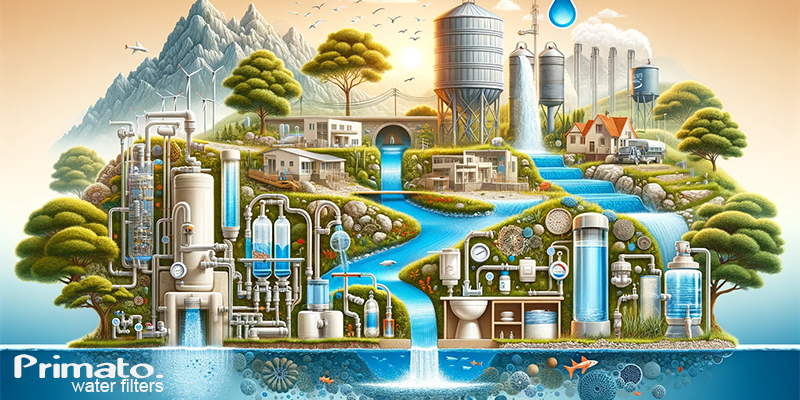
Water, a vital resource for life, embarks on a remarkable journey before it emerges from our household taps. This journey, replete with natural and man-made challenges, is a story of resilience and technological marvels. By tracing the path of water from its natural source to our homes, we can better appreciate the complex processes involved in delivering safe, clean drinking water. This understanding is crucial, especially when considering the role of advanced home filtration systems, like those offered by Primato.gr, in ensuring water quality.
1. The Natural Source
Water begins its journey in various natural sources, including rivers, lakes, underground aquifers, and rainwater catchments. These sources, while appearing pristine, can contain numerous impurities like microorganisms, sediments, and pollutants. The journey from these natural environments to our taps is fraught with challenges.
2. Collection and Initial Treatment
Upon collection, the water undergoes preliminary treatment at municipal facilities. This stage often includes screening to remove large debris and primary sedimentation to allow solids to settle. However, this is just the beginning. Many contaminants invisible to the naked eye still lurk in the water.
3. Filtration and Purification
The core of water treatment is filtration and purification. This multi-stage process involves various techniques:
- Coagulation and Flocculation: Chemicals are added to the water, causing particles to clump together and settle.
- Sand and Charcoal Filtration: Water passes through layers of sand and charcoal, trapping smaller particles and some chemicals.
- Disinfection: Chemicals like chlorine or ozone are introduced to kill bacteria and viruses.
Despite these rigorous processes, certain contaminants can still escape into the water supply, such as heavy metals, chlorine by-products, and microplastics.
4. The Challenges
Water’s journey is laden with challenges, both natural and man-made. Natural challenges include the presence of heavy metals like lead, which can leach into water from natural sources. Man-made challenges are represented by industrial pollutants and agricultural runoff, which introduce harmful substances like pesticides and pharmaceuticals into water bodies.
5. The Final Barrier: Home Filtration Systems
Considering these challenges, the final quality of drinking water can be significantly enhanced by home filtration systems. Products offered by Primato.gr serve as an essential final barrier in this journey.
- Faucet Filters (e.g., USA TF-WW): These filters attach directly to your tap, providing a convenient way to remove contaminants like chlorine, lead, and certain bacteria. Ideal for those seeking a simple, effective solution without the need for extensive plumbing modifications.
- Countertop Filters (e.g., Primato GR SKG-CT1WW): These sit on your countertop and connect to the tap via a hose. They offer a higher level of filtration, removing more contaminants than basic faucet filters. These systems are perfect for those who want improved filtration but have limited under-sink space.
- Under-Sink Filters (e.g., USA2GB12): Installed under the sink, these systems provide the most comprehensive filtration. They are capable of removing a wide array of contaminants, including chemicals, heavy metals, and microorganisms. These systems are ideal for households prioritizing maximum water quality.
6. The Importance of Maintenance
Maintaining these filtration systems is crucial. Regularly replacing filters ensures the effectiveness of the system and the quality of the water. Neglecting maintenance can lead to reduced filtration efficiency and even contamination of the water.
Conclusion
The journey of water from its source to our taps is a complex and challenging one. Understanding the various stages of filtration and purification it undergoes helps us appreciate the value of clean water. Moreover, recognizing the role of advanced home filtration systems in overcoming the final hurdles to water quality is vital. With products like those from Primato.gr, we can ensure that the water we drink is as pure and safe as possible, marking the successful end of water's remarkable journey.
What are three way water filter taps?
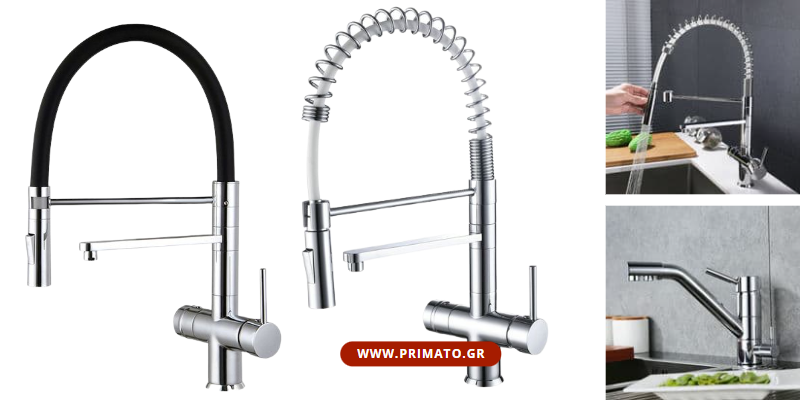
Three way taps are an essential addition to any modern kitchen, providing convenience, space-saving, and versatility in a single unit. These taps come in different designs, but they all combine hot, cold, and filtered water in a single faucet, providing a range of benefits to homeowners. In this article, we'll take a closer look at three-way taps, how they work, their benefits, and why Primato three way taps are the best in the market.
Shower water filters
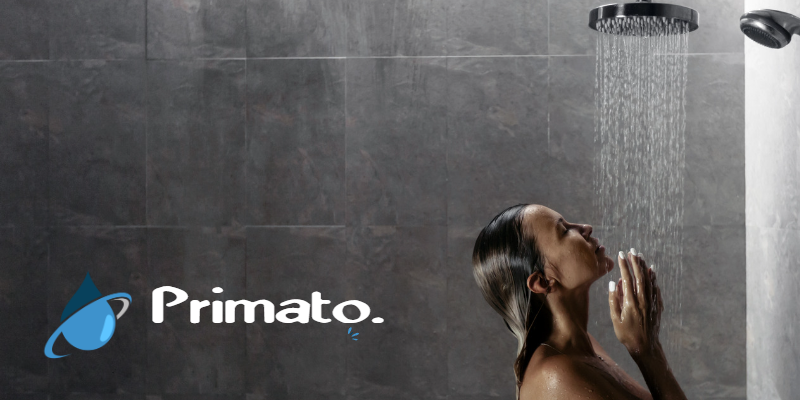
We all know that we need to shower often to maintain personal hygiene and health. However, most of us assume that the water that comes out of our showerheads is clean and safe to use, but that's not always the case. This water contains chlorine and other impurities such as sediment, heavy metals and other contaminants. This is where shower water filters come in handy. In this article, we will discuss the benefits of using a shower water filter, the media that filters the shower water, and why it is good for our health.
Commercial water filters for hotels, restaurants and cafes

Water is an essential element in the foodservice industry. It is used for cooking, cleaning, and drinking. However, water can contain impurities and contaminants that can affect the taste and quality of food and beverages. This is where commercial water filters come in. In this article, we will discuss the importance of water filters in hotels, restaurants, and cafes and how they are used in each establishment.
The reason why more and more people prefer undercounter water filters
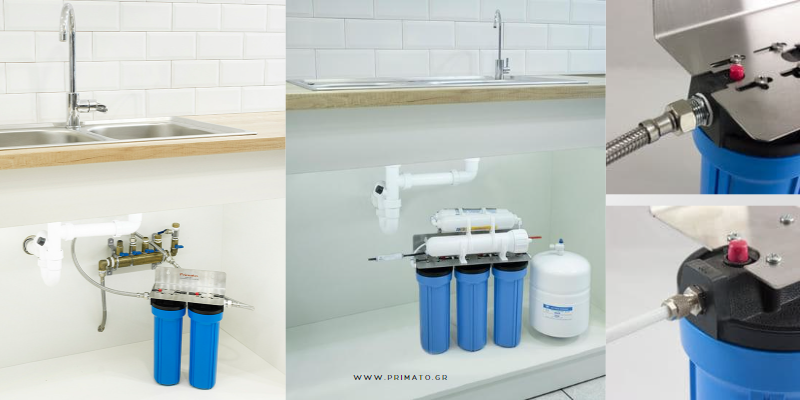
Under-sink water filters are becoming increasingly popular among homeowners as a convenient and effective way to ensure access to clean, filtered water. Unlike countertop or pitcher filters, under-sink filters are installed directly into the plumbing system, providing a steady and reliable supply of clean drinking water. In this article, we will explore why under-sink water filters are better than other types of water filters.
Zeolites in water treatment
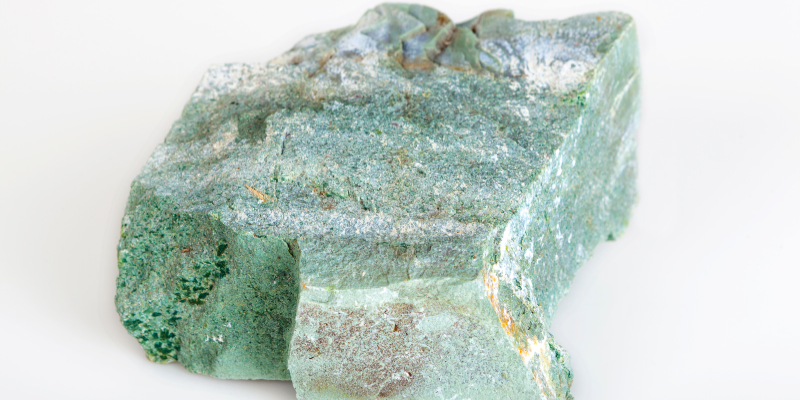
Water filters with zeolites are an innovative technology that uses natural minerals to remove impurities and improve the quality of drinking water. Zeolites are microporous materials that are formed from volcanic ash and other natural minerals. They have a unique crystalline structure that allows them to trap and exchange ions, making them an effective filtration medium for water treatment.
The water supply network of Athens
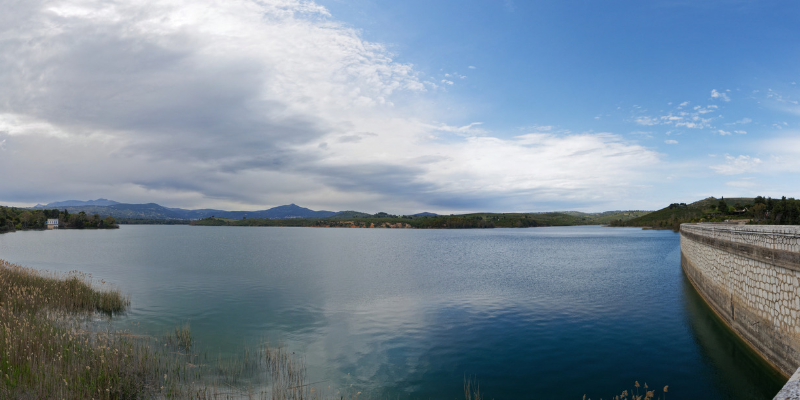
Athen's water supply network provides clean and safe drinking water to millions of residents and visitors each day. The system relies on surface and groundwater sources and a network of pipelines, pumps, and treatment facilities, to ensure that the water delivered to homes and businesses is of the highest quality, according to the latest European standards and according to greek law for potable water.
The whole truth about water filters

The whole truth about water filters: In this article we will try to answer the most frequently asked questions about water filters in recent years.
Russian water filters with aragonite - Purchase guide
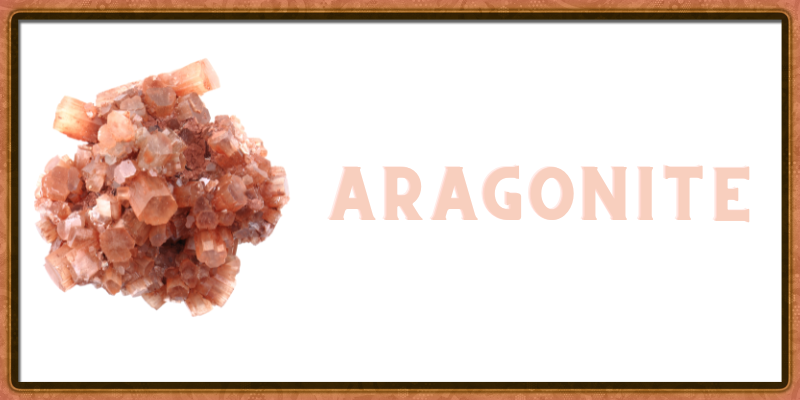
Aragonite takes its name from the Spanish city of Molina de Aragon and is a carbonate mineral, one of the three most common crystalline forms of calcium carbonate (CaCO3) found in nature. The other forms are the minerals calcite and vaterite. It is formed by biological and natural processes, including rainfall from sea and freshwater. Aragonite is a polymorph of calcite, which means that it has the same chemistry as calcite, but has a different structure, and most importantly, different symmetry and crystal shapes. Aragonite is formed in hot springs and geyser deposits, in stalactites and boulders on the seabed and is gradually converted to calcite. Geysers are named after one of the largest hot spring in Iceland, which translates as "gushing" in the local language.
Choosing and buying a countertop water filter
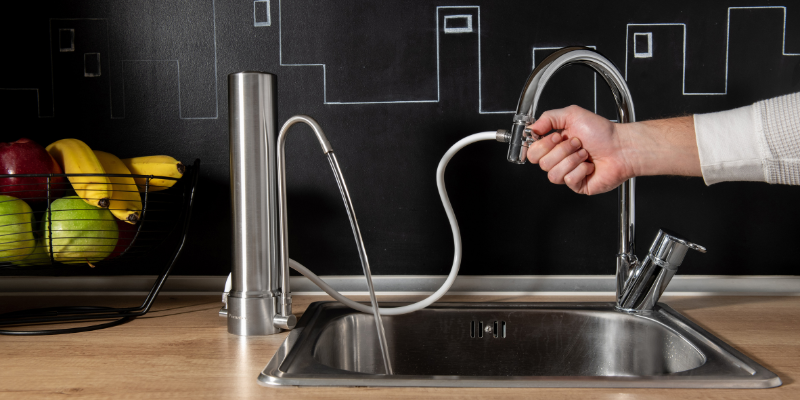
Countertop water filters are placed on your kitchen counter and are easily connected to your faucet with a diverter. With a switch of this diverter you can select unfiltered water (eg to wash your dishes) or filtered water (to drink, cook, wash vegetables etc). You can also fill empty bottles with clean water.
I live in Athens. Do I need a water filter?

Especially nowadays when the pollution of our environment and our bodies has peaked and occurs every day in various ways, the provision of clean water should be taken for granted. It is a part we can intervene to protect ourselves and it is the least we can do for our well-being. If you are a resident of Athens, you should already know that the capital is a European city that receives positive reviews for its water quality.
Water Filter Prices: Full Guide

Water filters have entered our lives for good and serve our needs for clean water in the best possible way!
More and more private and professional spaces are installing filtration systems to ensure the provision of water free from harmful substances, unpleasant odors and taste. However, there are many water filters available on the market and finding the right filter often seems difficult in this abundance of options. This is why we provide you with this complete guide to filter categories, their usage and, of course, their price range.
Does filtered water help with allergies?

Do you suffer from allergies? Millions of people around the world suffer from allergies, usually due to certain types of food, dust and pollen. Each time the immune system detects an allergen, it produces the corresponding antibodies to fight it, thereby causing the known nasty symptoms.
10+ reasons to add more water to your lifestyle!

We all know, and we shall all agree that water is essential to our health. However, how many of us have as a priority the consumption of clean water and, most of all, its adequate consumption? We are aware of the experts' advice on the amount of water we should drink, as well as of the importance of water filters, but at the fast pace we live, they probably end up being among the first things we neglect. Surely, you already know that the human body comprises 60% water. But do you know that the percentage of water in our brain reaches 85% and that in our blood reaches 90%?
Zeolite: A natural mineral in the service of water filtration
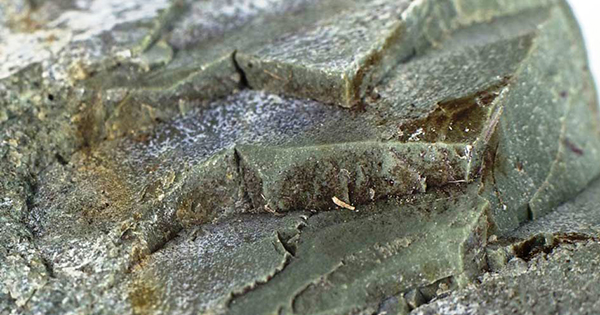
Over the past 50 years, advances in granular filter media water filtration have been achieved by using smaller mesh size sand combined with garnet or garnet/anthracite (multimedia) to achieve a nominal 12 to 15µ rating and to improve bed design and fluidics.
Thessaloniki Water: From the source to the glass
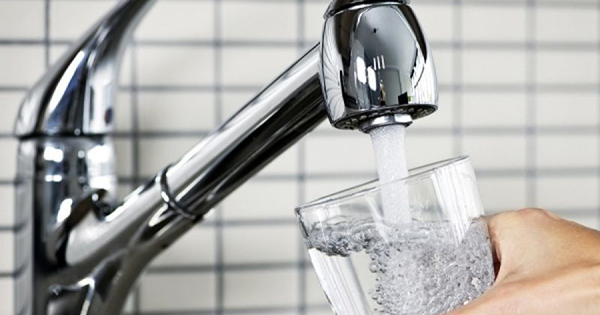
Thessaloniki needs in water are met by various sources, namely by the Aravissos and Axios aqueducts, after special treatment at the refinery located in the area of Sindos. The aqueducts in the areas of Narres, Sindos and Kalohori are not currently in use, but are fully operational and ready to cover any urgent needs of the population or as an alternative to failures or inadequacies of the key sources.
Meet the Greek Water Filters Manufactured in Thessaloniki
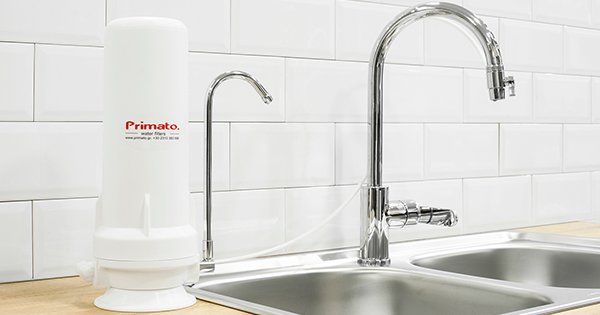
Taking into account the need of the greek market for quality water filtration systems, we began in 2018 to produce greek devices in Thessaloniki, where the headquarters of our company are located. Due to the wide range of these devices, we manage to meet all our customers’ needs, both those who want to install a countertop filter and those who need an under-sink filter.
Recent posts
- Well Water in Greece: What’s Really in It and How to Make It Safe
- NanoMetix 10" 0.01μm Water Filter | Advanced Nanofiltration Against PFAS & Microplastics
- The Future of Water: How Primato Filters are Pioneering New Standards in Water Safety
- Primato's Journey at Aquatech Amsterdam: Building Bridges and Expanding Horizons
- The Journey of Water: From Source to Tap - Understanding the Filtration Process
- What are three way water filter taps?
- Shower water filters
- Commercial water filters for hotels, restaurants and cafes
- The reason why more and more people prefer undercounter water filters
- Zeolites in water treatment
- The water supply network of Athens
- The whole truth about water filters
- Russian water filters with aragonite - Purchase guide
- Choosing and buying a countertop water filter
- I live in Athens. Do I need a water filter?
- Water Filter Prices: Full Guide
- Does filtered water help with allergies?
- 10+ reasons to add more water to your lifestyle!
- Zeolite: A natural mineral in the service of water filtration
- Thessaloniki Water: From the source to the glass
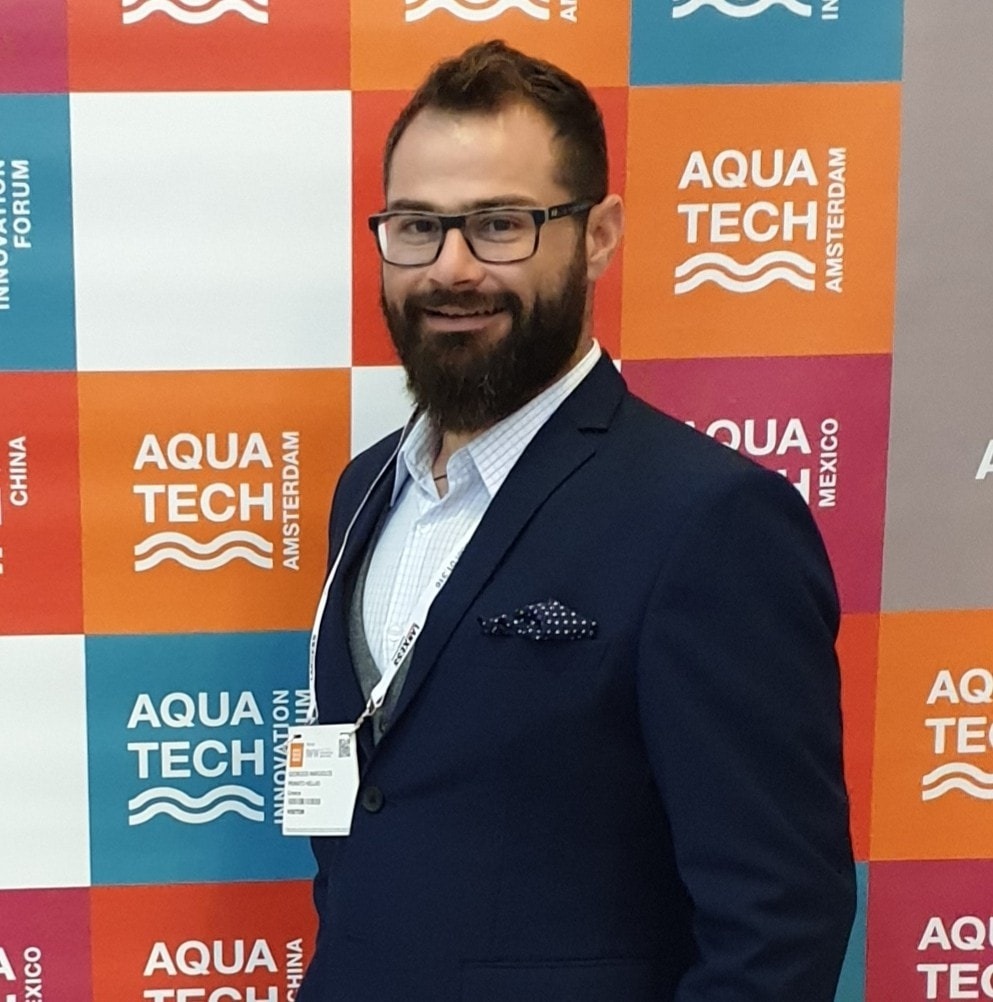
George Margiolos
George Margiolos was born in Thessaloniki and has graduated from the Department of Marketing of the Alexandreio Technological Educational Institute of Thessaloniki. He is fluent in English and (not so fluent) in German.
Ηe has been Project Manager at Avery Dennison - Fastener Division in the UK. There, his main project was to redesign the company's products into new applications so as to become more environmentally friendly. In combination with the fact that in the UK people are more familiar with water filters, he has developed a love for environmentally friendly water filters, which reduce the use of plastic bottles and improving people's quality of life.
Since 2008, he has published over 300 unique educational and informative articles on water filters and new water treatment technologies.
Occasionally, universities and doctoral students request to use George Margiolos' articles in their research because of their quality and uniqueness.
